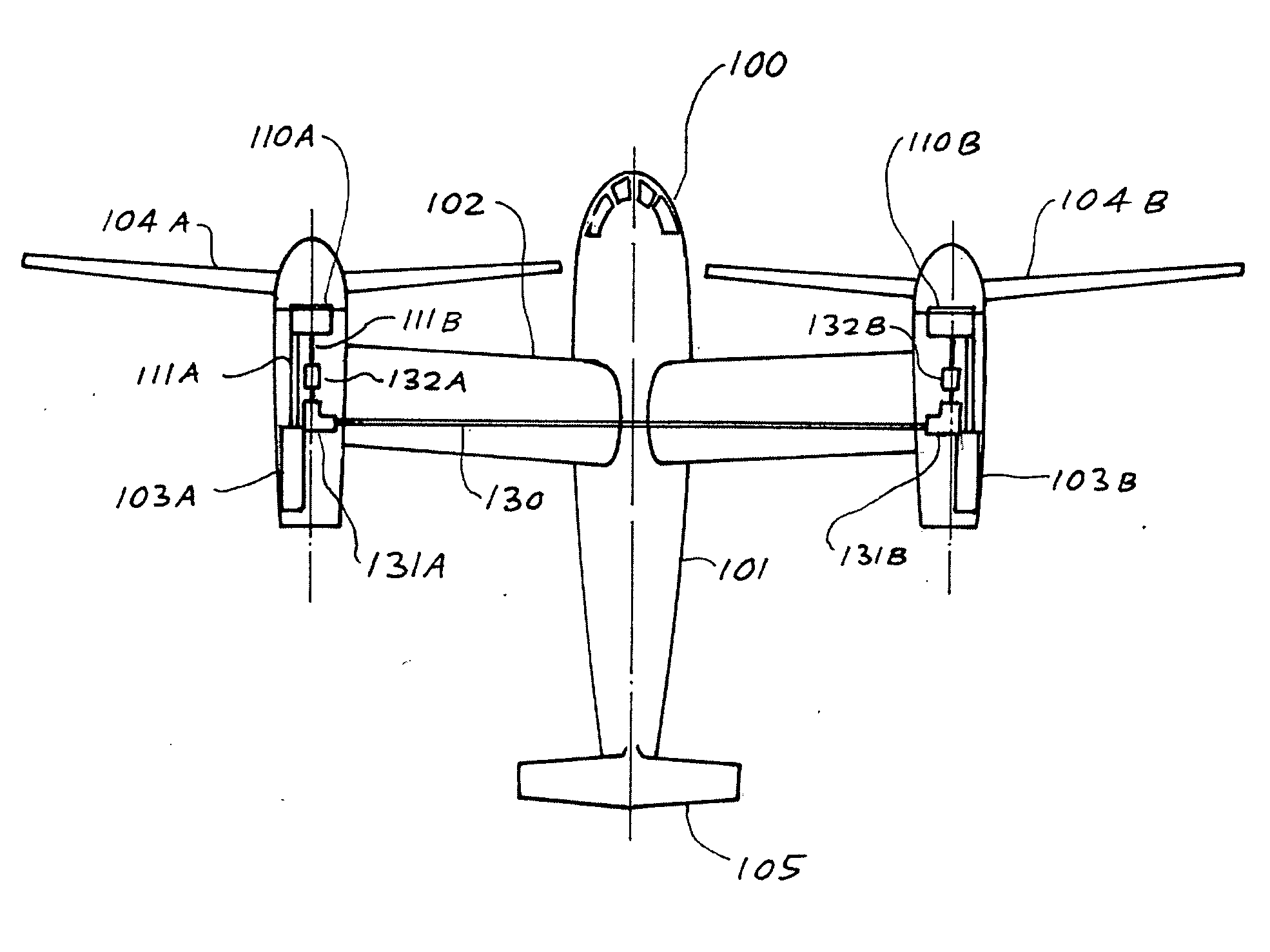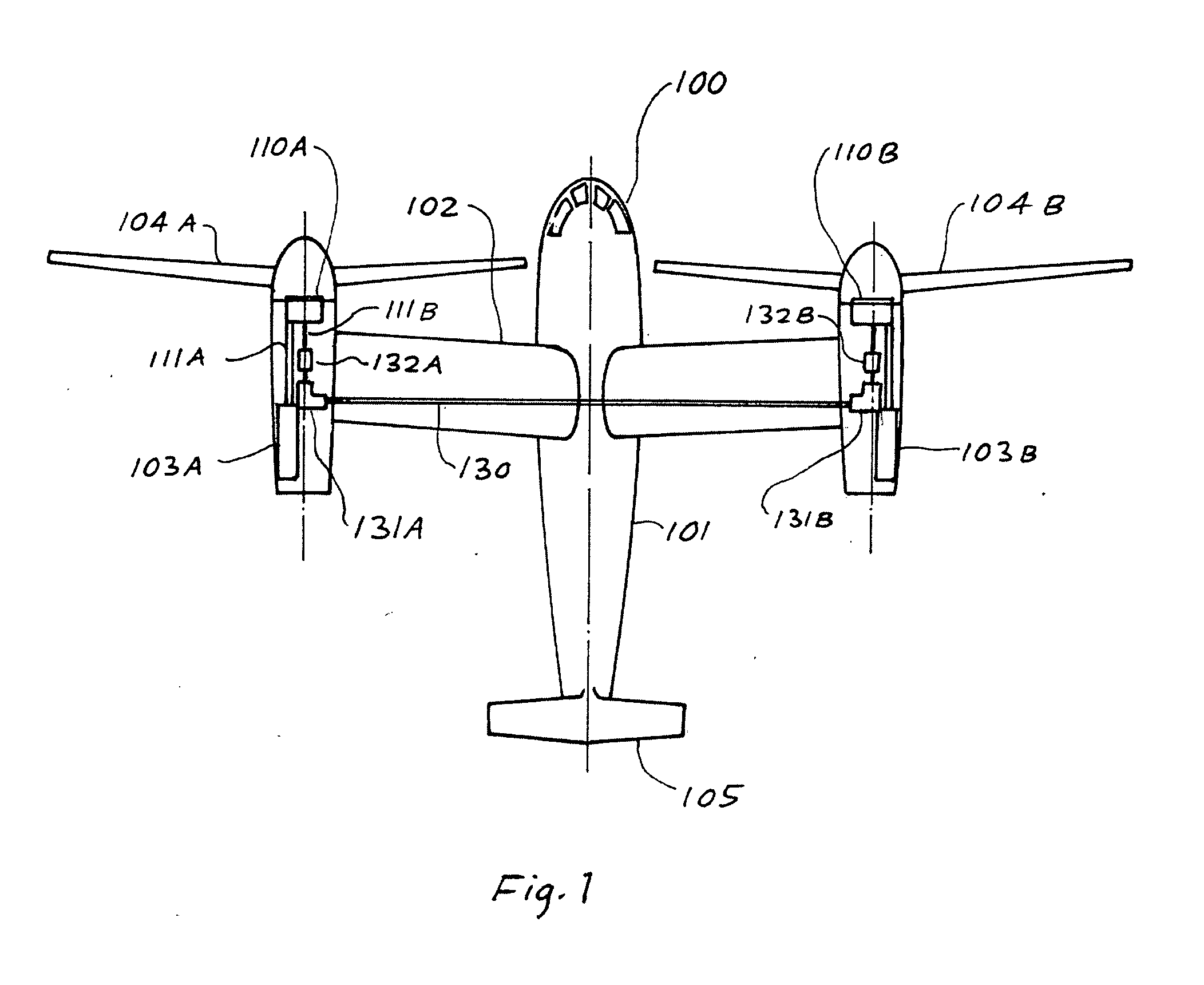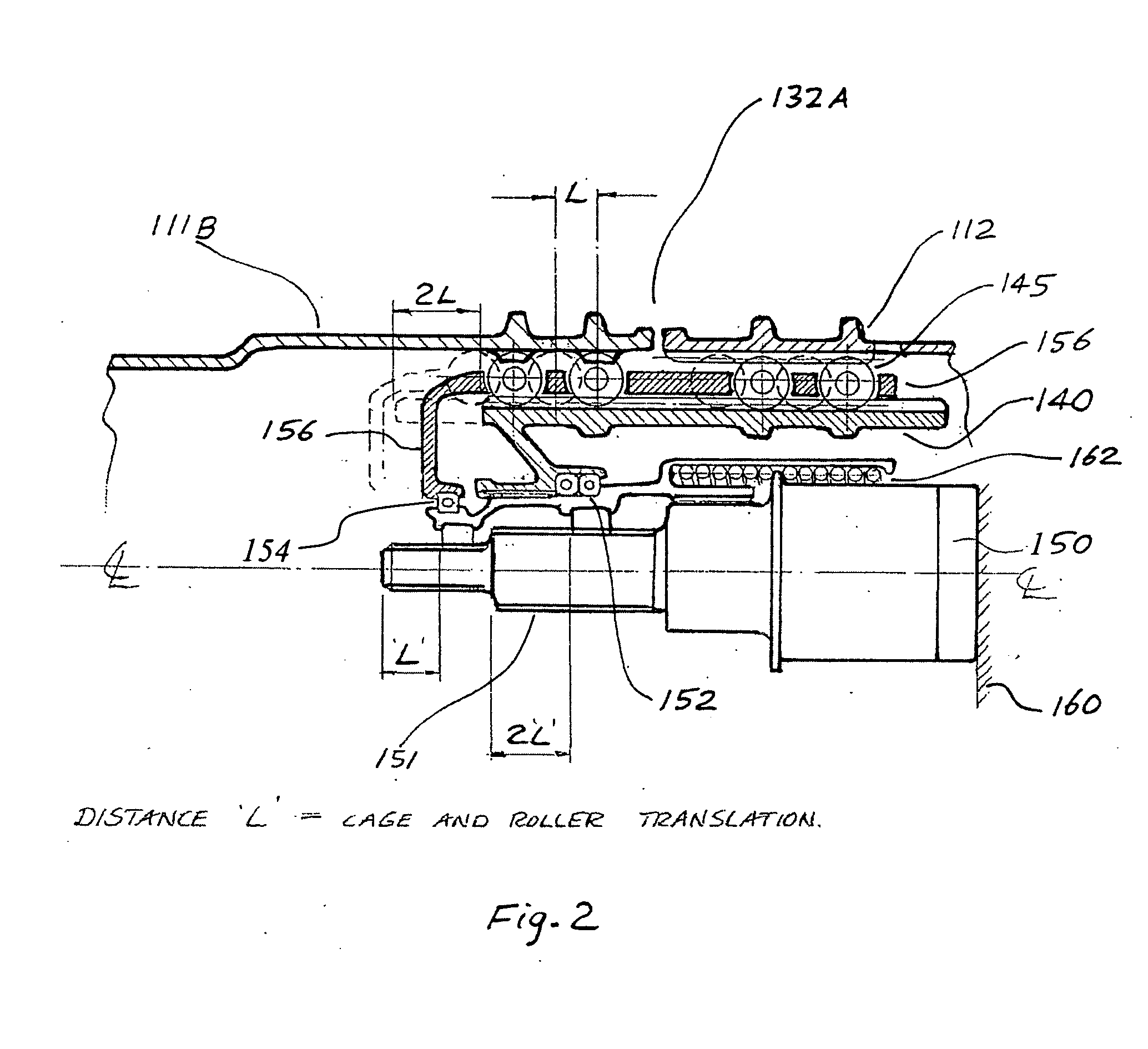Separable under load shaft coupling
a drive shaft and coupling technology, applied in the direction of couplings, mechanical equipment, transportation and packaging, etc., can solve the problems of rotors and two engines not being able to continue to fly to a safe landing, the driveshaft must be quickly disconnected, and the single point failure to achieve the effect of compromising flight safety
- Summary
- Abstract
- Description
- Claims
- Application Information
AI Technical Summary
Problems solved by technology
Method used
Image
Examples
Embodiment Construction
[0014] A typical tilt rotor aircraft is depicted in FIG. 1 in which rotorcraft 100 includes fuselage 101, a transverse wing 102, tail 105, left and right engines 103A and 103B, with left and right rotors 104A and 104B, respectively. Left and right gearboxes 110A and 110B are rotatably coupled via cross-wing drive shaft 130, angle drives 131A and 131B, and separable under-load couplings 132A and 132B. Shafts 111A and 111B transmit power from the engines to the rotors.
[0015] In rotorcraft or fixed wing aircraft with more than one rotor or propeller, continued flight is often possible with a single rotor. But, unless there are multiple power sources, it is necessary to disable and disconnect the damaged rotor or propeller from the power source. And it is necessary to do that quickly, and under load. Couplings as contemplated herein can be used for that purpose. In especially preferred embodiments, significant torque capacity can be achieved by utilizing many rollers, with each roller ...
PUM
 Login to View More
Login to View More Abstract
Description
Claims
Application Information
 Login to View More
Login to View More - R&D
- Intellectual Property
- Life Sciences
- Materials
- Tech Scout
- Unparalleled Data Quality
- Higher Quality Content
- 60% Fewer Hallucinations
Browse by: Latest US Patents, China's latest patents, Technical Efficacy Thesaurus, Application Domain, Technology Topic, Popular Technical Reports.
© 2025 PatSnap. All rights reserved.Legal|Privacy policy|Modern Slavery Act Transparency Statement|Sitemap|About US| Contact US: help@patsnap.com



